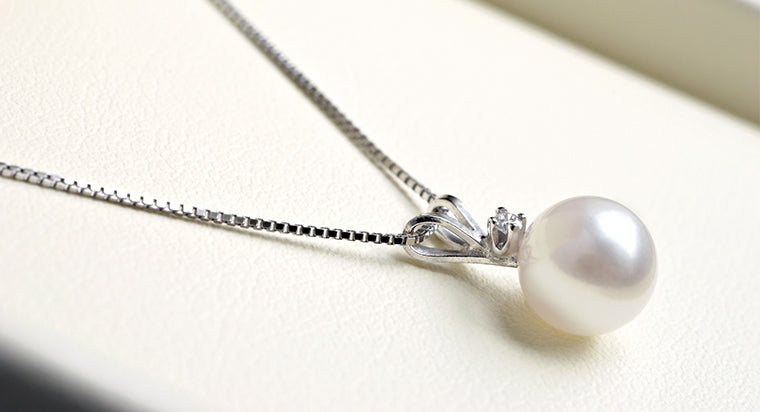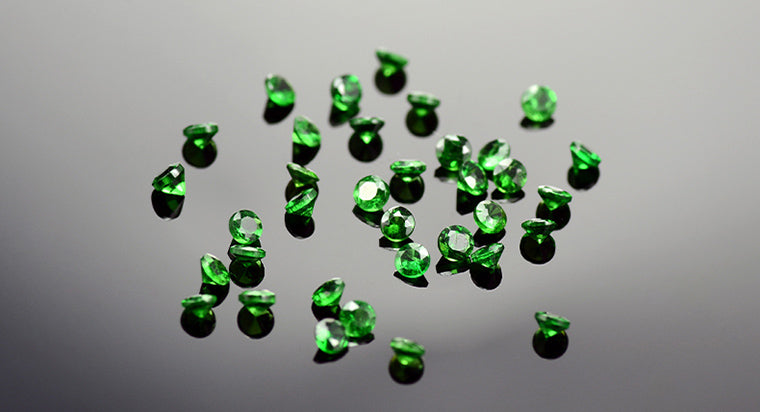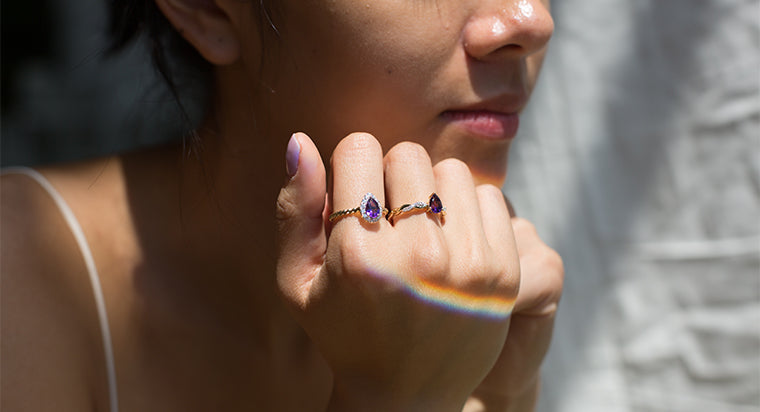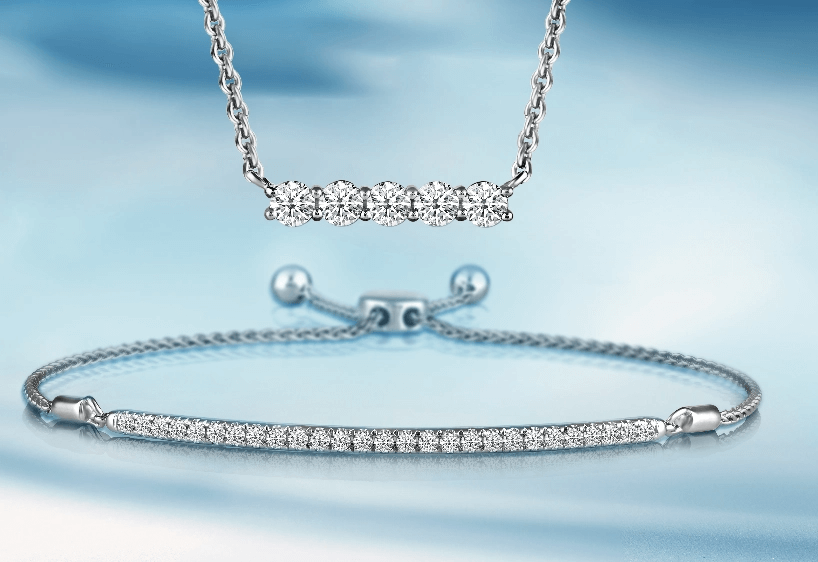Black Diamond Color
What is a natural black diamond?
Black diamonds, also known as carbonados and fancy black diamonds, are an impure form of polycrystalline diamond consisting of diamond, graphite, and amorphous carbon.
Natural black diamond chemical make-up
Natural black diamonds are a carbon isotope. This means that it possesses the same chemical elements as white diamonds, but has a different atomic weight. Moreover carbonados physical properties differ from white diamonds, which includes the number of inclusions and clusters of graphite. It is speculated that this is the reason why black diamonds are more difficult to cut than other colors.
How do natural black diamonds get their color?
Natural carbonados get their color due to an abundant amount of dark inclusions. They are usually microscopic concentrations of graphite, magnetite, hematite or native iron. These dark gems have a body color that may range from near-colorless to brown to olive green. Moreover, it is the concentration of cleavages and internal fractures stained black by graphitization that are responsible for the color.
Where are natural black diamond deposits?
Carbonados in nature are very rare. That sentiment goes for any other fancy colored diamond. Moreover, these dark gems are considered geological oddities, and are found in just a few locations in the world.
There are three locations where most natural black diamonds are found: Brazil, the Central African Republic, and Kamchatka, Russia. While there are many diamonds mined in big pits, most black diamonds are actually found in volcanoes, riverbeds, and other alluvial deposits.
How do lab black diamonds get their color?
During the lab formation process, diamonds are subjected to high-pressure, high-temperature. This process is meant to darken the lighter parts of the diamond. For carbonados, there are other methods used to darken the stone such as dyeing or irradiation.
How is a lab black diamond heat-treated?
Unlike their natural counterparts, color-enhanced black gems are often heated with low pressure, or exposed to radiation. This is because natural carbonados are difficult to cut and polish. Therefore, labs often irradiate industrial grade diamonds. This changes their color to appear black. Whereas, some other diamonds are heated to high temperatures while some are exposed to gamma rays in a nuclear reactor. When white diamonds are heat treated in a lab, their color can change to a dark green that appears black.
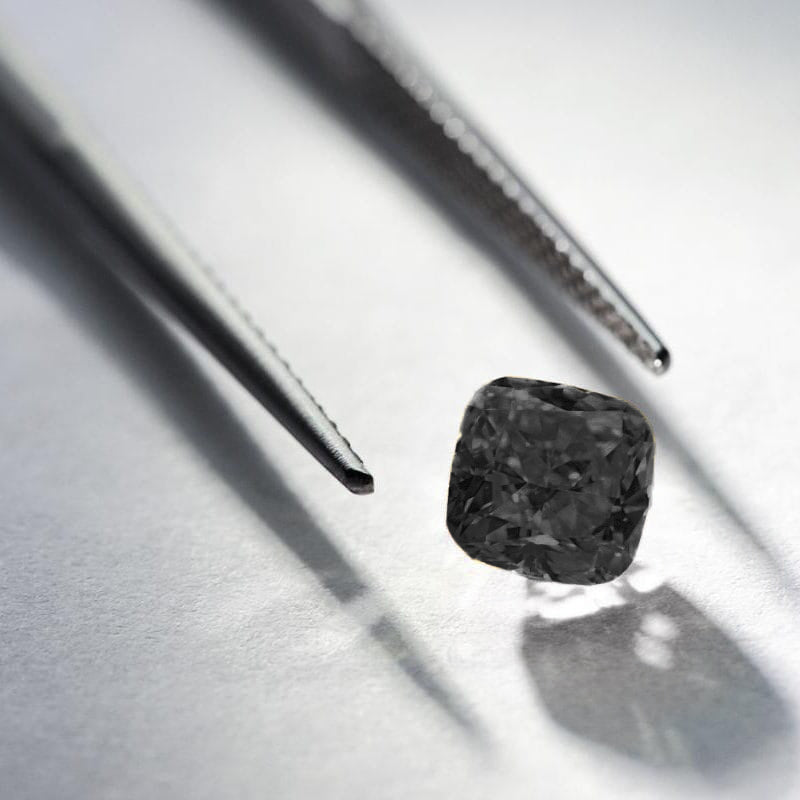
Are black diamonds real?
If you are wondering if black diamonds are real diamonds, the answer is yes and no. Technically, yes they are because chemically they are the same composition of the white diamonds we know and love. But alternately, no. This is because the color is often not naturally achieved.
For the process of heat treatment scientists essentially “create” graphite inclusions. No matter which treatment method is used, a carbonado ring is a beautiful alternative to the traditional white diamonds. Remember, you can confidently say black diamonds are real diamonds, even if it’s a heat-treated stone.
How is black diamond (natural and simulated) graded for color?
Due to their dark color, black diamonds cannot be graded for color the same way a white diamond would. Whether it is natural or simulated in a lab, it is important to do your research on the origin of the stone and how it was colored.
If it is natural, ask about a Colored Diamond Identification and Origin Report. If it is created in the lab, be sure to ask how the diamond got its color from your jeweler. Poor quality black diamonds can be painted black, whereas a higher quality stone will be treated with irradiation and heat.
With Clarity only offers AAA quality gemstones. Some of which are treated through standard heat. Gemstones are heat-treated to achieve a color and finish that will truly shine and last. Heat treatment is permanent. Moreover, heat-treatment lets gems achieve a higher color and clarity grade. That goes on to say, most gemstones used in jewelry are heat treated. If you’re curious about dark gems, With Clarity offers certified black diamond engagement rings.
FAQs
A black diamond is a diamond that appears black in color due to the presence of impurities, such as graphite, or because the diamond has a high level of internal graining, which absorbs light and makes the diamond appear black.
Black diamonds are not naturally occurring and are created through a process of high pressure, high temperature (HPHT) treatment or by irradiation. The treatment stabilizes the impurities or internal graining, resulting in a black color that is permanent and does not fade over time.
Yes, black diamonds are real diamonds. They are formed from the same mineral, carbon, as other diamonds and have the same physical and chemical properties. The difference between a black diamond and other diamonds is that black diamonds appear black in color due to the presence of impurities or internal graining, which absorbs light and makes the diamond appear black.
Black diamonds are not naturally occurring and are created through a process of high pressure, high temperature (HPHT) treatment or by irradiation. The treatment stabilizes the impurities or internal graining, resulting in a black color that is permanent and does not fade over time.
Here are some ways to identify a black diamond:
1) Color: Black diamonds are, as the name suggests, black in color. The color should be even and consistent throughout the diamond.
2) Grading Report: A diamond grading report from a reputable laboratory, such as the Gemological Institute of America (GIA) or the International Gemological Institute (IGI), can provide information about the color and treatment of a diamond. A report can confirm if a diamond is a black diamond and provide information about its color intensity and quality.
3) Test with a UV light: Black diamonds can appear to have a blue or gray tint under ultraviolet (UV) light. If a diamond is not a black diamond, it will not show any color under UV light.
4) Sparkle: Black diamonds will still have some sparkle, but it may be less noticeable due to the color of the diamond.
It is important to note that not all black diamonds are created equal, and their quality can vary. It is recommended to purchase a black diamond from a reputable jeweler and to request a grading report from a reputable laboratory.
Yes, black diamonds are always lab-enhanced. They are not naturally occurring and are created through a process of high pressure, high temperature (HPHT) treatment or by irradiation. The treatment stabilizes the impurities or internal graining, resulting in a black color that is permanent and does not fade over time.


